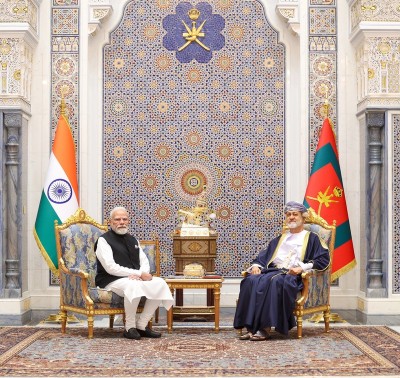 Poll Campaign
Poll Campaign
Changing Craft of Political Campaigns in India: Medium As the Message
Both politics and communication are as old as human existence. From cave paintings to smart phones, the medium has evolved and so also the art of messaging. Much before mobiles with the internet became ubiquitous, Marshall McLuhan came up with his famous ‘Medium is the Message’ dictum, meaning it is the medium rather than content which defines the way we experience the world.
There can be no politics without effective communication. Afterall, it is all about acquiring the mindshare of people to make them buy into a particular ideology or agenda. Political communication too has evolved from ‘direct contact’ with people as found in the city-states of ancient Greece to ‘direct messaging’ (DM) in the age of WhatsApp and Twitter.
India, now in the thick of 18th Lok Sabha polls, has witnessed a sea change in the art and craft of campaigning through the various editions of what is billed as the world’s biggest democratic exercise.
There was a time when walls all across were painted (or plastered) with catchy political slogans in the poll season. The list is long- ‘Jai Jawan, Jai Kisaan’ (1965), ‘Garibi Hatao’ (1971) etc. Then came the Election Commission’s Model Code of Conduct in the 1990s and defacement of walls and public places became history.
Even now, catchphrases are at the heart of political campaigns. Sample ‘Abki Baar, 400 Paar’ or ‘Haath Badlega Halaat’ this time. But the medium and mode of delivery have changed.
The 1984 Lok Sabha polls was a landmark in the sense that an Ad agency marketed a political party on a scale never seen before, a first in India. The age of political advertising had dawned in India.
But that was pre-internet and pre-social media era.
Today, the battle-lines have been completely redrawn with IT cells of parties at the heart of their communication strategy. The heady cocktail of social media, smartphone and Artificial Intelligence (AI) have completely redefined the way political campaigns are crafted and delivered.
First, the poll campaign is no longer episodic. Like the media, it is also now 24X7. The election season is only on the calendar. The messaging never stops. Even the EC’s 48-hour ‘silent period’ just ahead of polling is now just on paper. In effect, the campaign continues even when voting is on, courtesy the digital platforms and TV channels beaming political rallies live to every home.
Second, powered by data analytics and AI, campaigns are gradually becoming more and more customised like ads. Voters are no more categorised only in terms of class, caste, community, gender and age for any customised outreach. Today, it is down to the individual voter- microtargeting- and his or her personal preferences.
This is what the now defunct political consultancy and data analytics firm, Cambridge Analytica, sought to capitalise on when it claimed to use Facebook data for its clients to better target political messages. Earlier, computational psychologist Michal Kosinski and his colleague had demonstrated how on the basis of a few dozen Facebook ‘likes’ alone, one could predict personality, political preferences and orientation of a user better than his or her family, or even their spouse.
Donald Trump’s 2016 presidential campaign is said to have harvested FB data for the elections through Cambridge Analytica. Earlier, the firm was allegedly hired in the run-up to the Brexit referendum in 2016. In India too, it came under fire in 2018 for allegedly mining FB data of Indian users without consent.
The past few elections in India though have already seen a paradigm shift. Political consultancy firms have mushroomed. Much ahead of elections, they employ young recruits, especially those with public policy or communication background, to interact directly with voters to gauge their frustrations and expectations. The surveys are extensive and help build the poll narrative for the client party or candidate.
But perhaps the most important part of today’s political campaign is that a large part of it is subliminal, a trend we also see now in advertising. The messages are not seen as coming from the party. These are discreetly circulated in the social media without any imprint of the party. And this is seen as more effective. It’s like embedding product promotion with content on TV shows, which are seen to be more impactful than the Ads appearing during commercial breaks.
(Formerly a senior editor with a national daily, the writer is a Senior Advisor, NCAER. The views are personal)
Support Our Journalism
We cannot do without you.. your contribution supports unbiased journalism
IBNS is not driven by any ism- not wokeism, not racism, not skewed secularism, not hyper right-wing or left liberal ideals, nor by any hardline religious beliefs or hyper nationalism. We want to serve you good old objective news, as they are. We do not judge or preach. We let people decide for themselves. We only try to present factual and well-sourced news.






